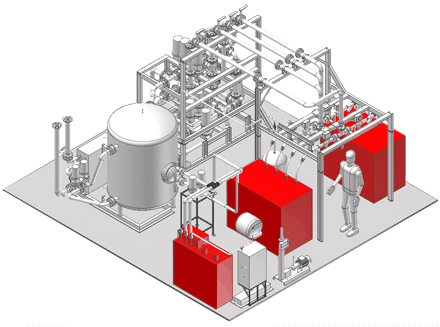How does a heat pump work?
At the hart of a geo-energy system we find the heatpump. Most heatpumps operate according to the principle of a gas-compression cycle. A refrigerator, for example, is a heatpump and is built of the same components: a compressor, a condenser (the grate on the back of the fridge that is warm) and an evaporator (located inside the fridge, the part that gets cold). Moreover, there is an expansion valve present.

The heatpump contains a special gas/liquid (the refrigerant or working fluid). In the evaporator the temperature of the refrigerant is lower than the surrounding space, here the refrigerant will take up heat from the surroundings and evaporate. The gas is subsequently compressed in the compressor, increasing both pressure and temperature.
In the condensor the heat is transferred to the colder surrounding, the refrigerant cools down and condenses. The liquid refrigerant, still at high pressure, passes the expansion valve where the pressure is lowered to a level where the mixture evaporates to gas. This process is accompanied by a marked lowering of temperature. The heatpump uses the fact that the phase changes (evaporation and condensation) involve the exchange of large quantities of thermal energy, together with the fact that the temperature at which the working fluid evaporates or condenses is pressure dependent.
A heatpump literally pumps heat from a low to a high temperature level. A small quantity of electrical energy is needed to drive the compressor, the thermal energy is taken from the environment. More thermal energy is released than electrical energy used: the system has a very high efficiency. The energy from the environment may be energy from the building itself (e.g. a zone needing cooling will reject heat that can be used to heat a zone needing heating at the same time), or from the ground or others sources such as air.










